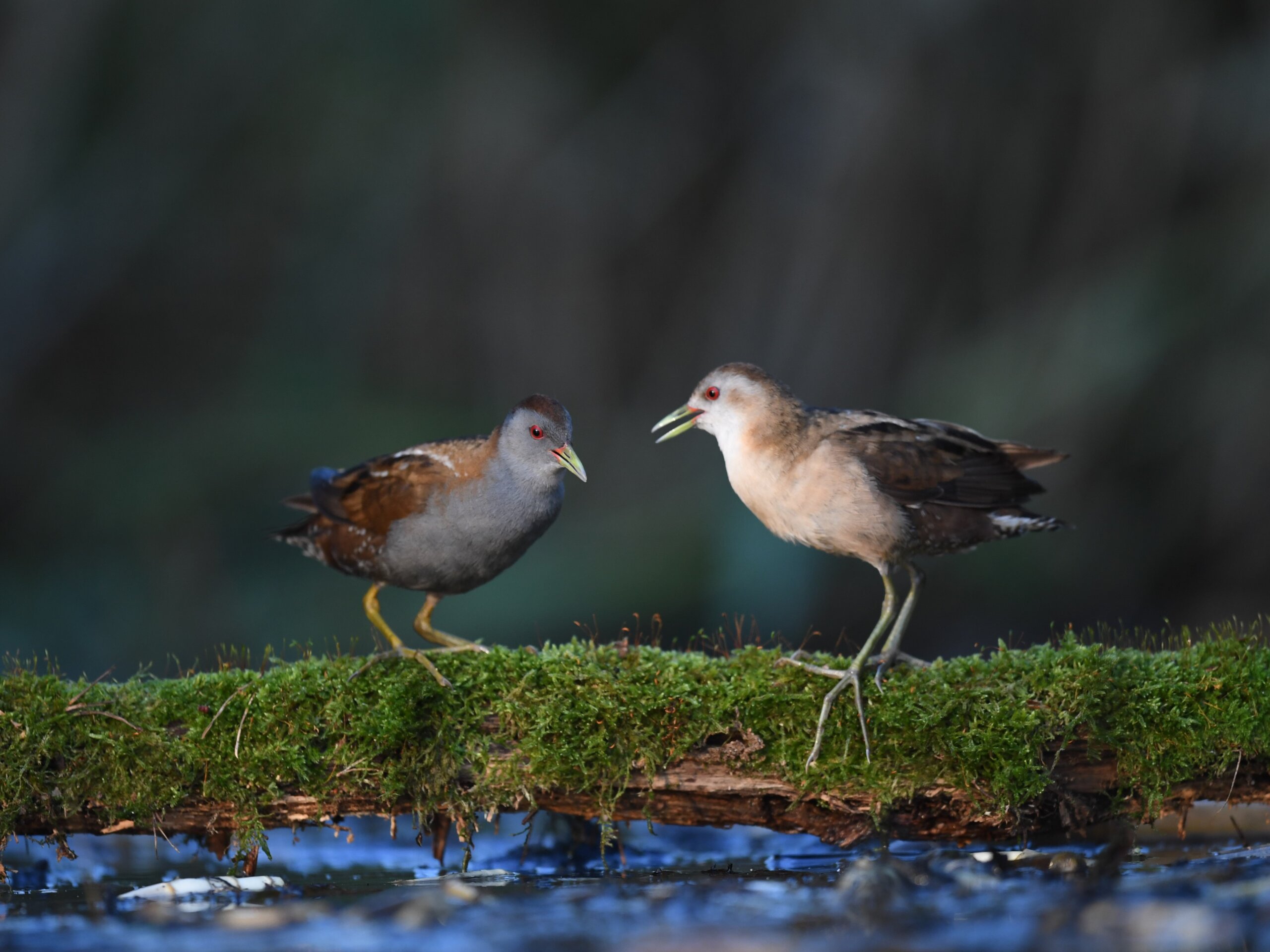Extraordinary duets in the bird world

29 07 2025
Duetting is the domain of tropical songbirds, where long-term pair bonds allow partners to gradually fine-tune their songs to one another. However, some bird species are capable of performing remarkably precise duets without any prior “training” with their partner. What’s more, they can also be found in Poland.
One such species is the little crake (Zapornia parva), whose vocal duet mechanisms and functions were studied by two researchers: Jan Jedlikowski from the Faculty of Biology at the University of Warsaw and Paweł Ręk from the Faculty of Biology at Adam Mickiewicz University in Poznań. Their findings were published in the prestigious journal “Proceedings of the Royal Society B: Biological Sciences”.
In songbirds, duet coordination typically takes time — partners have to learn each other’s vocal repertoire and the order of syllables to gradually improve their synchronization in alternating duets. As a result, the gap between their vocal phrases usually ranges from 50 to 200 milliseconds. In contrast, little crakes achieve a much higher level of precision — the interval between their calls can be as short as 14 milliseconds, and the birds can sing in perfectly coordinated duets at a rate of up to 30 calls per second. Even more surprisingly, they can synchronize with a completely unfamiliar individual, suggesting that the duet can form almost immediately after a pair formation.
Such exact vocal coordination at such high speed is possible thanks to matching rhythm and tempo. The duet calls of little crakes are highly regular, allowing each bird to predict when their partner’s pause will occur. Synchronizing rhythm and tempo right at the beginning of the duet enables the birds to create one of the fastest coordinated vocal performances known in the animal kingdom.
The researchers also point out that this high-speed duet is only possible when the birds are right next to each other. This suggest that the duet may encode information about the distance between partners. However, this is only one of several hypotheses, and confirming it will require further research.
Original publication: https://royalsocietypublishing.org/doi/10.1098/rspb.2025.1100
Photo: Dariusz Ratajczyk